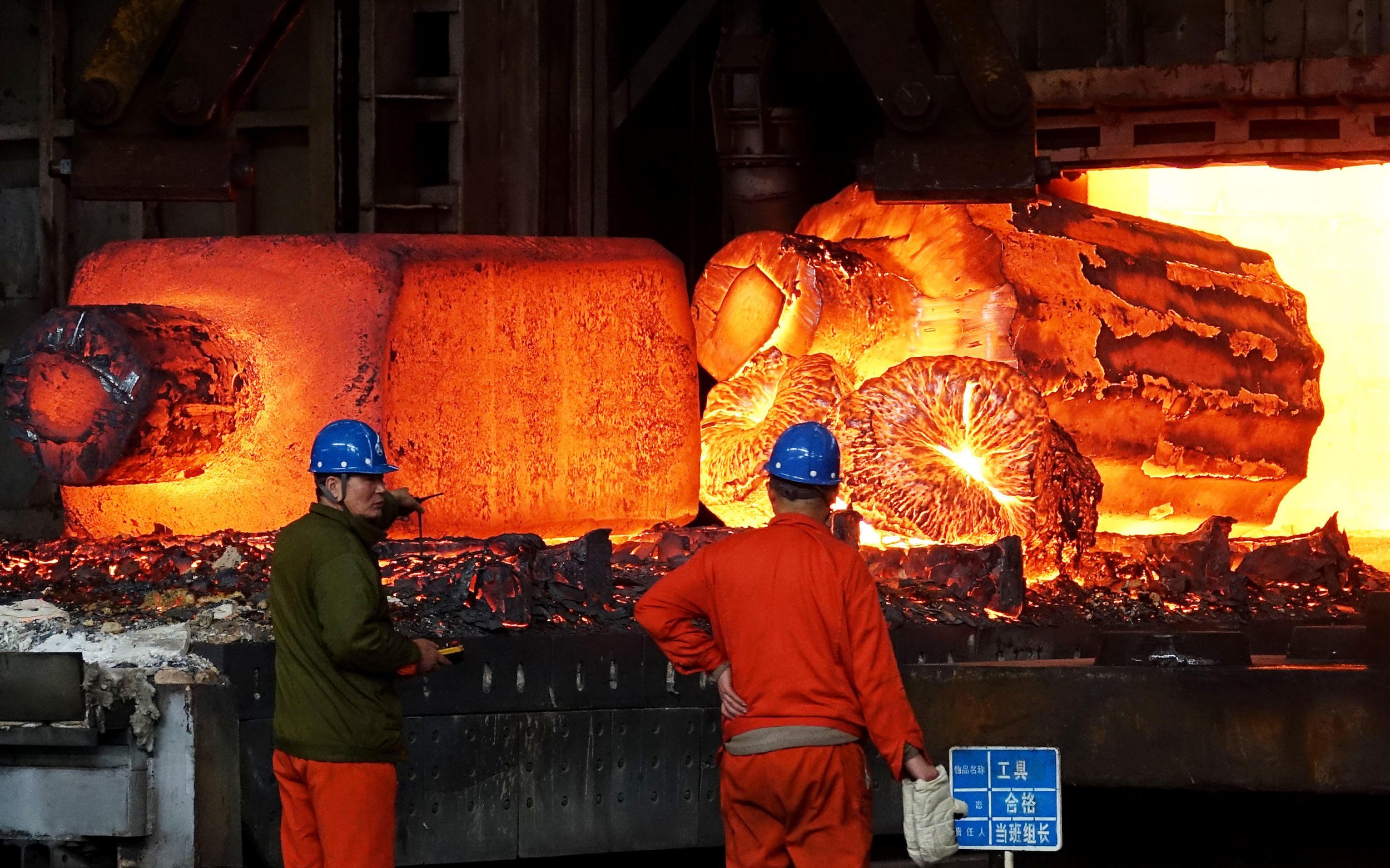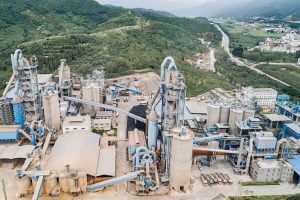Work on a new national climate action plan is in full swing, with the focus being on targets for 2035, China’s climate envoy Liu Zhenmin told Dialogue Earth at a World Economic Forum meeting in Dalian this June.
Signatories to the Paris Agreement must submit such action plans, known as Nationally Determined Contributions (NDCs), every five years. The aim is to ratchet up ambition towards keeping global warming within 2C of preindustrial levels and pursuing efforts to limit it to 1.5C. While the NDCs are national commitments, they reflect global ambition on climate governance. Targets for 2035 are due by February next year.
As a major emitter, China’s NDCs are closely watched. Research has found that the country is on track to meet its current NDC and, in some fields, is surpassing expectations. Nevertheless, the country needs to do more to align with the 1.5C target, experts say.
Looking a decade into the past and future, what factors should China consider? What changes are likely to be made in its 2035 goals? We asked specialists from China and elsewhere what they thought.
Setting targets that support clean energy
China’s first NDC, submitted in 2015, was updated in 2021 with only minor changes. Now that China has 10 years of experience setting and updating NDCs, experts say the country can be bolder with both the scope and ambition of its targets.
“The framework of the 2021 update was based on that designed in 2013-2014. That was a decade ago, and China’s new NDC should reflect the changes since,” said Li Shuo, director of the China Climate Hub at the Asia Society Policy Institute, a thinktank headquartered in the US.
The last 10 years have seen China surpass expectations in many areas of the low-carbon transition. By the end of 2023, for example, it had installed over 1.5 terawatts of renewable energy-generation capacity – 15 times the level of a decade ago. China accounted for 37% of the global total of wind and solar power generated in 2023.
| 2015 | 2021 | Progress as of 2023 | |
| Carbon peak and neutrality targets | Peak CO2 emissions around 2030, and make best efforts to peak early | Peak CO2 emissions before 2030, and achieve carbon neutrality before 2060 | |
| Carbon intensity, by 2030 | Down 60-65% on 2005 | Down by at least 65% on 2005 | Down 51% on 2005 |
| Share of non-fossil fuels in energy consumption, by 2030 | Around 20% | Around 25% | At 17.9% |
| Forest stock volume, by 2030 | Up 4.5 billion cubic metres on 2005 | Up 6 billion cubic metres on 2005 | Up 7 billion cubic meters on 2005 |
| Wind and solar power, by 2030 (total installed capacity) | Over 1.2 terawatts | 1.18 terawatts (June 2024) | |
Growth in “new energy vehicles” (NEVs) has been another highlight. In 2023, 9.5 million were sold in China, representing over 60% of global sales. Ouyang Minggao, a member of the Chinese Academy of Sciences, has told the media that 100 million NEVs are expected to be on China’s roads by 2030.
Li Shuo said: “China could consider adding new industrial targets to its NDC goals, such as NEV market share or emissions reductions in the steel and cement sectors.” He thinks that the NDC could better take into account the prospects of differing industries and thus feature more ambitious targets.
Hu Min, director and co-founder of Chinese thinktank the Institute for Global Decarbonization Progress, believes that when considering the ambition level of the NDC, changes in the international environment need to be considered alongside developments in China.
Global emissions cuts aren’t keeping up with the gravity of the climate change problemHu Min, director and co-founder of the Institute for Global Decarbonization Progress
“The main change in external conditions is that global emissions cuts aren’t keeping up with the gravity of the climate change problem,” she said. “Also, green trade policies proposed by the EU and US have had a huge impact on global cooperation on clean technology.”
At last year’s UN climate conference, COP28, nations committed to “work together” to triple global renewable-generation capacity, to 11 terawatts, by 2030. The speed and scale of China’s renewables rollout will be vital to achieving that goal. Global capacity is currently on track to hit 8 terawatts by 2030, with China to account for 3.2 terawatts of that, according to a recent International Energy Agency review of national climate plans.
Lauri Myllyvirta, lead analyst at the Centre for Research on Energy and Clean Air (CREA), a thinktank based in Finland, says that China should set NDC targets that support ongoing growth in the clean-energy industry. This would help speed up the global transition and ease growth bottlenecks in domestic markets.
“It’s essential for China to set NDC targets that support the continued growth of these industries,” he said. “Unambitious targets would mean declining demand for clean-energy technologies. This would result in a dramatically worsened overcapacity situation, financial distress and intensified concerns about dumping from China’s trade partners.”
Should China cut its emissions rapidly or gradually?
The warming thresholds set in the Paris Agreement are benchmarks for global climate action, and the basis on which NDCs should be updated. In May this year, China’s climate envoy Liu Zhenmin attended a meeting of the US-China Working Group on Enhancing Climate Action in the 2020s. The official readout of the meeting said both countries welcomed COP28’s call for countries to submit 2035 NDCs that are “economy-wide, cover all greenhouse gases, and are 1.5C-aligned”. This suggests China’s NDC update will be aimed at the 1.5C limit.
China’s 2021 NDC update was designed for the 2C limit. Its targets for the share of non-fossil energy sources and carbon intensity were drawn from 2020 research into 2C scenarios by Tsinghua University’s Institute of Climate Change and Sustainable Development.
A shift to the 1.5C target would likely mean the addition of a target for a reduction in carbon emissions, expressed as a percentage of their peak. Since 2015, China’s plan has been to peak its carbon emissions before 2030. Research institutes in China and overseas dispute whether the subsequent fall should be gradual but with increasing speed (a curved line on a graph), or steep and rapid (an acute straight line).
An assessment by the Asia Society Policy Institute says that alignment with the 1.5C target requires 2035 emissions to be 30% below their peak value – or, in the most ambitious scenario, 80% below.
Myllyvirta said: “A 30% reduction would also mean following a straight-line pathway from the emission peak to carbon neutrality before 2060. This makes it a consistent and credible approach to implementing the long-term target. Aiming for less emissions reduction before 2035 will mean greater pressure to reduce emissions in the period from then until 2060.”
But China’s own experts say that the emissions graph should form a curve – slower falls after peak carbon, speeding up over time. Teng Fei, deputy director of Tsinghua University’s Institute of Energy, Environment and Economy, said there will be various uncertainties around the time of peak carbon, and carbon emissions are not going to peak and then immediately start falling.
“Bringing emissions down will mean fighting a lot of inertia in energy systems. It’s very likely that we won’t see big falls in absolute terms in the five years post peak, but that things will speed up later,” Teng told Dialogue Earth. He said modelling shows a gradual fall between 2035 to 2040, with an increasingly steep downward curve after.
Uncertainties around peak carbon and GDP growth
Many studies have shown that China can hit peak carbon before 2030 as it has pledged to. But exactly when, and how high the peak is, will have a big impact on its emission trajectory.
The State Council recently published a work plan for gradually shifting China’s focus towards controlling carbon emissions, away from the current focus on energy consumption. Accordingly, it said that the 2026 to 2030 period would rely mainly on carbon intensity targets, with caps serving a complementary role. Once emissions have peaked, the cap will become the main measure, with intensity targets secondary.
“The question is, when will China decide it has hit peak carbon and make that shift?” said Li Shuo. “China has always said its peak will come later than research bodies have predicted, and that may lead the government to take less action on the climate than researchers expect.”
When setting its climate goals, China should also take into account economic growth trends, the experts say. Carbon-intensity targets depend on the relationship between GDP and total carbon emissions. Meeting carbon caps, meanwhile, will require carbon intensity to fall faster than the economy grows.
China’s carbon intensity has fallen 51% since 2005, and Teng Fei told Dialogue Earth that reductions have been steady in recent years, at about 3-4% annually. The biggest factor impacting total emissions is therefore the GDP growth rate, he added, but uncertainties over that rate make it hard for China to set an appropriate cap.
“Developed countries can commit to a carbon cap because they see regular GDP growth of around 2% or 3% without big fluctuations,” Teng explained. “But nobody can say if China’s growth rate is going to hold at 5% up to 2030. It could be higher, it could be lower.”
The pressing task, then, is to decouple economic growth and carbon emissions. Between 2019 and 2023, infrastructure, manufacturing capacity and real estate were major drivers of Chinese growth, according to research by the International Energy Agency. In 2023, China’s energy-intensity figure was down 0.5% year-on-year, with carbon intensity also holding steady.
Indicators from the first half of this year show China’s real-estate market is still in a slump, and profits from infrastructure investments are decreasing. The traditional drivers of growth in China are losing power.
But Yao Zhe, global policy advisor for Greenpeace East Asia, says clean and low-carbon industries, such as electric-vehicle and renewable-energy manufacturing chains, are becoming new growth drivers. “Simon Stiell, executive secretary of the UN climate convention, has encouraged looking at climate action plans as blueprints for future investment,” she said. “The economic benefits give China good reason to raise climate targets and decouple carbon emissions from growth.”
Will the NDC targets include all greenhouse gases?
Experts told Dialogue Earth that the new NDC is very likely to contain emissions targets that include non-CO2 greenhouse gases.
China’s talk of peak emissions has usually been in terms of CO2 emissions. There has never been any official statement on whether carbon neutrality means neutrality for all greenhouse gases. However, Xie Zhenhua, China’s former climate envoy, said on a number of occasions that 2060 neutrality would include other greenhouse gases.
I think the 2035 NDC should cover all greenhouse gases. It would be a significant advance in its coverage.Teng Fei, deputy director of Tsinghua University’s Institute of Energy, Environment and Economy
Teng Fei, of Tsinghua University, said: “Personally, I think the 2035 NDC should cover all greenhouse gases. It would be a significant advance in its coverage.”
Lauri Myllyvirta agrees on the importance of covering other greenhouse gases besides CO2, adding that the new NDC should also make clear that the coverage applies to the 2060 carbon-neutrality target.
There are signs that the political will does exist to cover non-CO2 greenhouse gases. Last November, China published an action plan on controlling methane emissions, though without any quantitative targets. The same month, China and the US released their Sunnylands Statement on boosting shared climate action. It said both countries would build on their “respective national methane action plans to develop their respective methane reduction actions/targets for inclusion in their 2035 NDCs and support each country’s methane reduction/control progress.”
Over a century, methane has 28 to 34 times the global warming potential of CO2, so controlling it can play an outsized role in mitigating warming.
Teng Fei’s research team has found that China’s non-CO2 greenhouse gas emissions have already peaked, he told Dialogue Earth. Emissions of methane, the main gas in that group, are falling in both the agricultural and energy sectors, he said. While coal output has grown in recent years, most of the expansion has been from open-pit mining, which produces less methane than shaft mining. However, China’s current carbon-accounting taxonomy doesn’t completely reflect the fall.
“Our research found that methane emissions from China’s energy sector peaked in 2013-2014 and are now 20% below that. This has driven falls in non-CO2 greenhouse gas emissions,” Teng said. “This means including all greenhouse gases will still allow for a pre-2030 peak, followed by falls. The main question is how fast those falls will come, and to what level. That will have a huge impact on how we reach carbon neutrality.”









